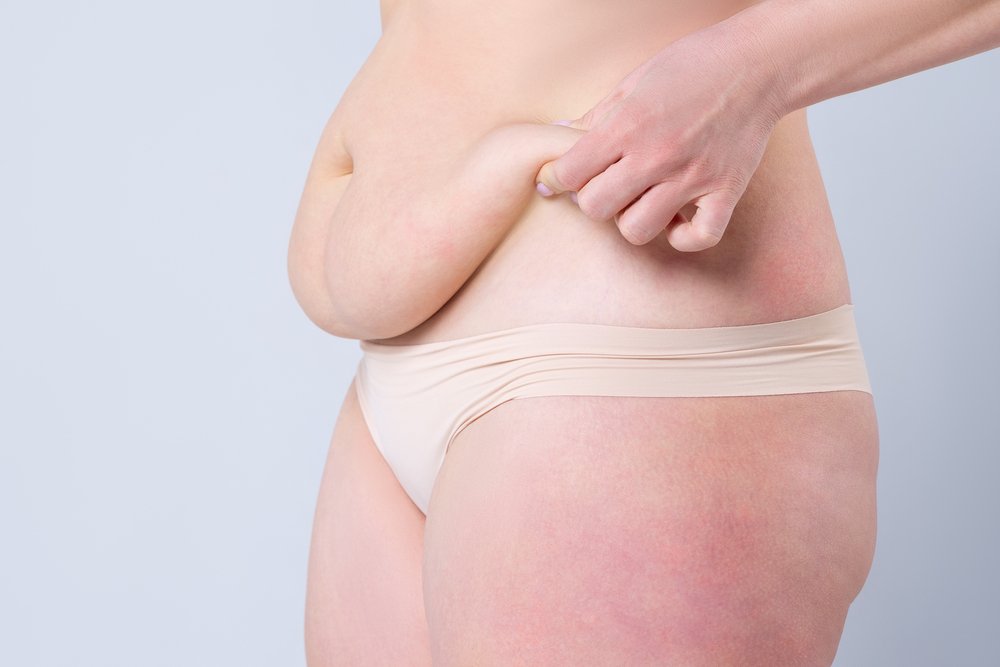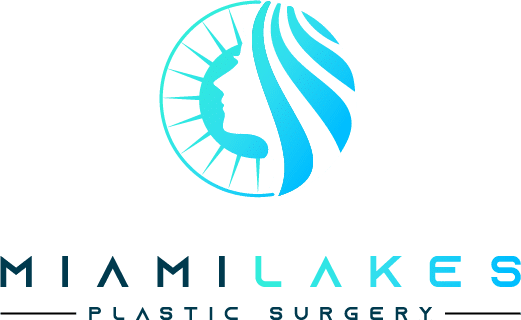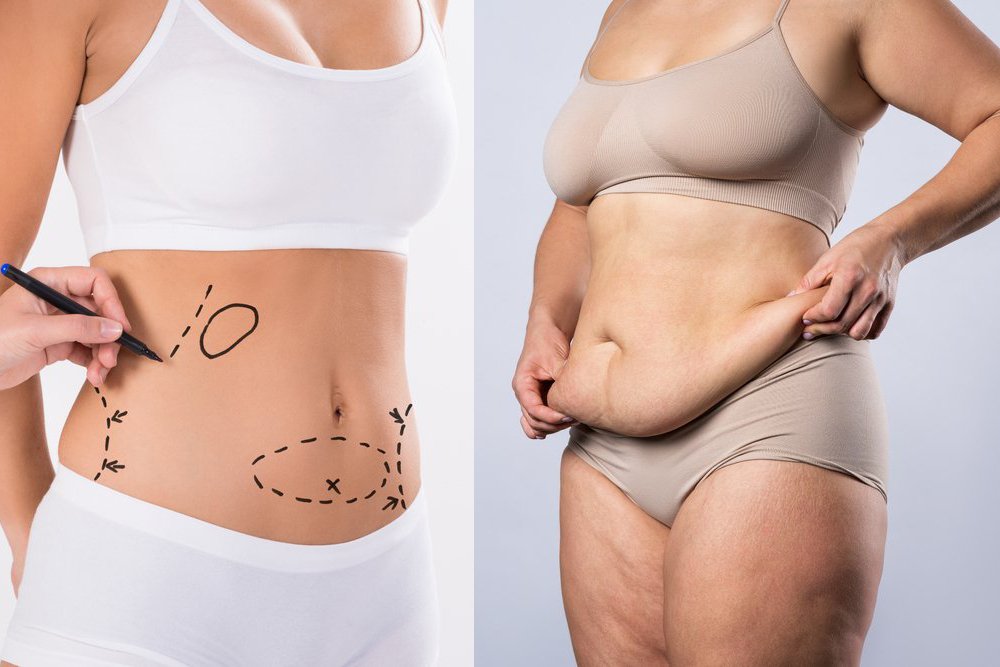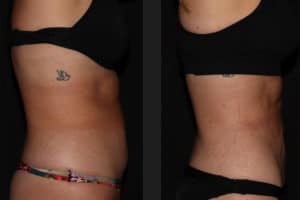Liposuction or Tummy Tuck? Which Option Is Better?
A tummy tuck and liposuction are different surgical procedures that target the midsection. Both are similar in that plastic surgeons aim to slim down the stomach, making it appear thinner, tighter, and flatter. However, the two procedures differ in terms of the surgical methods, recovery time, benefits, and risks. Both are offered by Dr. Ernesto Torres at Miami Lakes Plastic Surgery. An overarching summary and comparison of the two procedures is detailed below.
| Liposuction | Tummy Tuck | |
| Procedure | The surgeon creates small incisions at the site of interest and vacuums out fat deposits. | The surgeon makes a cut across the lower stomach and removes excess skin. They then pull the skin tightly over the abdomen. |
| Cost | An average of $4,000-$8,000 | An average of $6,000-$10,000 |
| Recovery | Roughly 48 hours | Roughly 6 weeks |
| Benefits | Safe and simple procedure less invasive than other plastic surgery procedures permanent elimination of fat cells immediate results | Addresses sagging skin permanent results can correct urinary incontinence and herniasImproves posture and abdominal tone |
| Risks | You may require several sessions to get your desired lookIf medical advice and a healthy lifestyle are not followed, results may not be sustained Numbness Can cause blood clotting and other irregularitiesAccumulation of fluidInfection | Potential loss of skin or scarring Sensation change damaged or dead tissue accumulation of fluidInfection |
Ideal Candidates for Liposuction
Liposuction is for individuals who want to eliminate excess fat around the stomach, hips, and thighs. The American Society of Plastic Surgeons outlines the below factors that make individuals good candidates for liposuction:
- Those with strong muscle tone and elastic skin. Therefore, those under the age of 40 are usually better candidates for liposuction because they have better skin elasticity.
- Those whose weight is within 30% of the suggested body weight
- Those who are in good health and do not have conditions that may impair healing
- Non-smokers
Those who struggle with excess fat despite maintaining a proper diet and exercise routine may also benefit from liposuction.
Ideal Candidates for Tummy Tuck

The American Society of Plastic Surgeons outlines the below factors that make individuals good candidates for a tummy tuck:
- Those with a healthy and stable weight
- Those looking to change their midsection’s appearance but who have realistic expectations
- Those who have completed their final pregnancy
- Non-smokers
A tummy tuck is particularly popular for those that have finished having children and are looking to get rid of excess belly skin. Those who are looking to change a “beer belly” midsection are not ideal candidates for a tummy tuck. It is also important to note that those with higher melanin levels and darker skin are at higher risk of scarring, keloids, and pigmentation changes.
Results of Liposuction
Liposuction results in a flatter and more proportional midsection after the procedure. Results should be permanent. Usually, any gained weight post-liposuction will be distributed to other areas of the body that were not suctioned.
Results of Tummy Tuck
Tummy tuck results are also permanent. Excess skin is removed, leading to a tighter and more defined midsection. In addition, your abdominal wall will be stronger and more stable. Tummy tuck results may be reversed if you have a pregnancy or gain weight.
Liposuction Procedures
With liposuction, the plastic surgeon will start by creating small incisions in the area with fat deposits. The surgeon will then run a cannula (thin tube) into the skin to dislodge the fat cells. Using a medical vacuum, they will remove the fat deposits from the site of interest. With liposuction, you may need multiple visits and sessions to get the results you are looking for.
Tummy Tuck Procedures
Tummy tucks are more invasive than a liposuction procedure. They are usually done under general anesthesia and last between two to three hours. The surgeon will make a horizontal cut across the lower stomach, where excess skin is cut and removed.
The skin is then pulled tightly over the abdomen, allowing for a flatter and tighter look. Some procedures will require a circular incision to be made for the belly button. A tummy tuck is also used to fix weakened abdominal muscles. To do this, the surgeon attaches the two vertical abdominal muscles together with sutures.
People also ask

Which is better, Lipo 360 or tummy tuck?
Lipo 360 and the tummy tuck procedure are both great options for those looking for a more defined midsection. However, which procedure is better will depend on your body and personal cosmetic goals.
Your surgeon will advise you on which procedure is the best option for you during your consultation. Typically, a tummy tuck is best for loose skin. Lipo 360 is preferred for those looking to remove fat.
Is Lipo 360 the same as a tummy tuck?
Lipo 360 is not the same as a tummy tuck; each procedure targets a different part of the midsection to create a more defined look. Lipo 360 aims to eliminate fat, whereas a tummy tuck aims to eliminate excess skin.
Can you get a tummy tuck and Lipo 360 at the same time?
Lipo 360 and a tummy tuck can be done at the same time. In fact, combining the procedures instead of doing them separately can reduce recovery time and maximize results.
You should get both procedures if your goal is to remove both excess skin and fat. Results will yield a tight, toned, and sculpted midsection. This combination is great for those who are looking for a change after pregnancy or weight loss.
Which is more painful, Lipo 360 or a tummy tuck?
Pain levels after each of these procedures will vary depending on the person. However, typically a tummy tuck surgery is more painful than Lipo 360 because it is more invasive and has longer recovery periods. Lipo 360 is done through a series of small skin incisions, whereas a tummy tuck requires an incision through the muscle.
Therefore, a tummy tuck can cause more discomfort and pain. However, this pain can be managed with pain medication prescribed by your surgeon.





